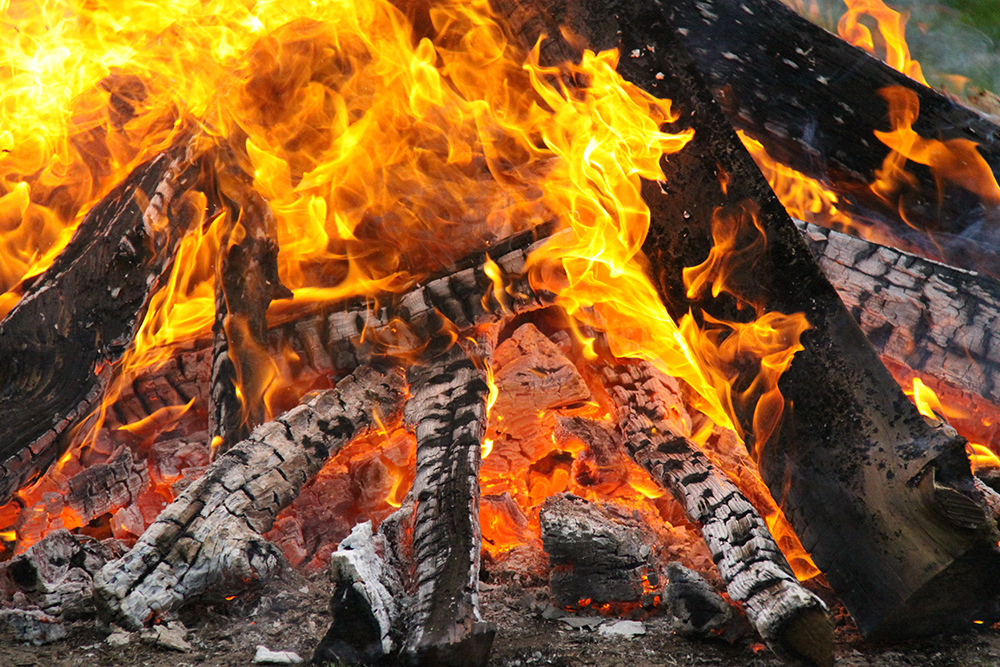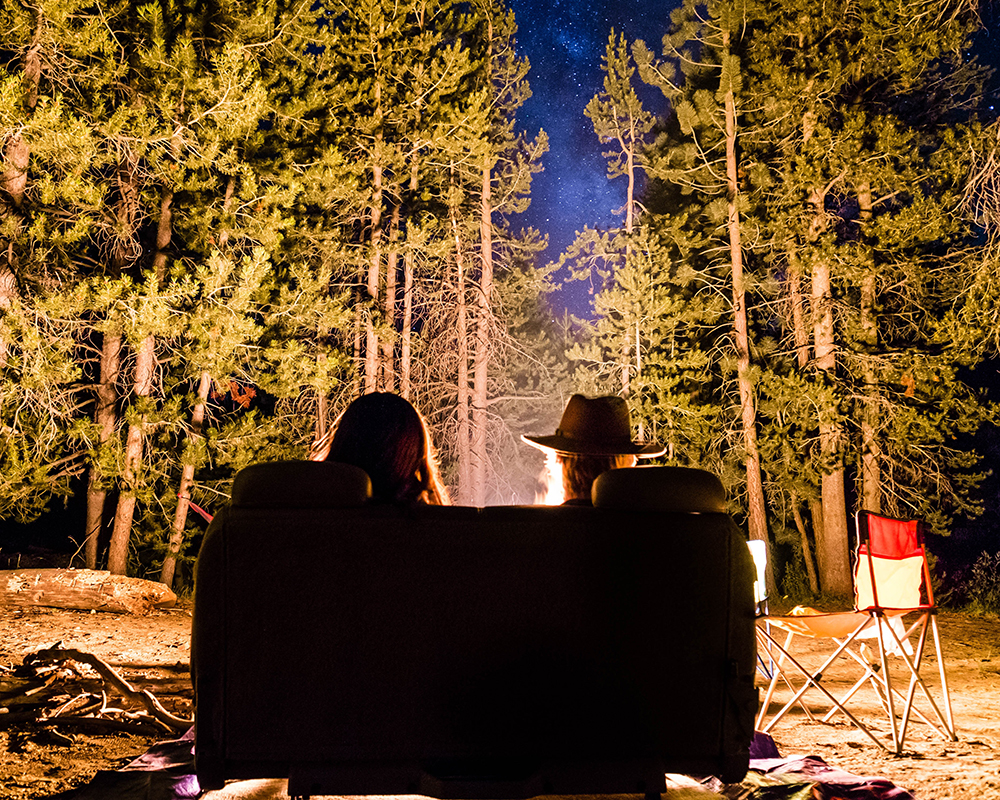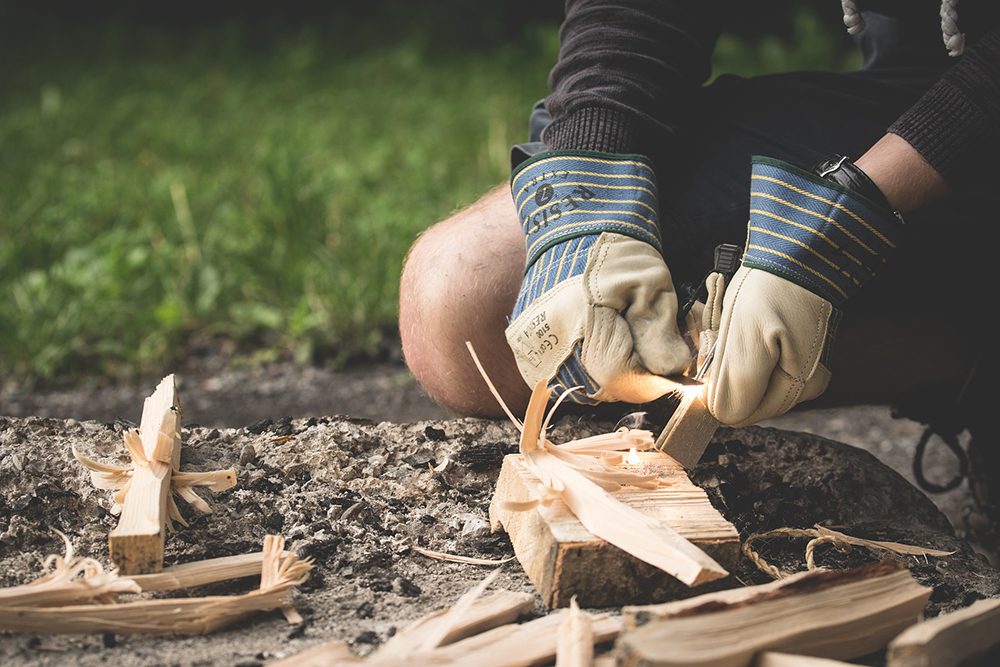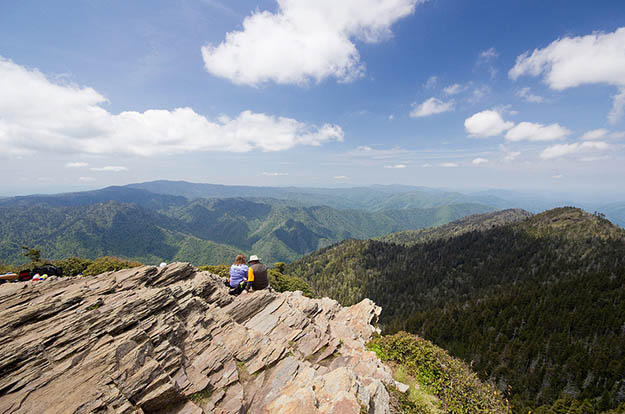Camping
Fire Safety Precautions When Building Campfires

Going camping with your loved ones and building a campfire is a great way to bond and spend quality time with each other. However, you must make sure that you practice fire safety precautions to ensure your safety as well as prevent forest fires.
Campfire Safety Tips
One of the traditional joys of camping is the opportunity to build a campfire. Why, exactly? Because campfires bring people together through light, warmth, food, and fellowship at night in the outdoors!
Unfortunately, campfires also result in more injuries, litter, environmental damage, and uncontrolled fires in parks and wilderness than any other human activity. For this reason, it’s extremely important to practice campfire safety.
To get you started, here are some campfire safety techniques to ensure the security of fellow campers, wildlife, and natural surroundings:
1. Be Prepared
The best way to avoid injuries or damage due to a campfire is to be fully prepared. This means campers should research park and site policies regarding campfires ahead of time and strictly adhere to those regulations.
Additionally, campers should thoroughly research how to safely build a campfire, maintain it, and properly extinguish it. Such preparation is essential before starting a campfire.
After all, a stray, uncontained spark can be responsible for immediate and catastrophic damage and injury.
Here are some additional ways to prepare for building a campfire:
- Use designated fire pits built on gravel or dirt
- Keep tents, cars, and personal items away from the fire
- Begin campfire with sticks and twigs and then add larger pieces of wood as needed
- Ensure the weather conditions are ideal, with little to no wind
2. Be Vigilant

Though it might be tempting to relax around a campfire, it’s essential to stay vigilant for safety reasons. A campfire should never, under any circumstances, be left unattended. Furthermore, children should be monitored at all times and kept at a safe distance away. This also applies to pets and animals.
It’s also best to remember burns can happen quickly and can be life-threatening. This means reckless behavior might result in terrible injury – and reckless behavior includes the use of alcohol and other substances!
Additionally, ensure a fully operational fire extinguisher is close at hand in case of an emergency. A bucket of water is also helpful. Still, there is no substitute for vigilance and attention to detail when it comes to campfire safety.
3. Be Thorough
Campers should not expect or attempt to build large campfires. In fact, it’s best to keep a campfire as small as possible for easier containment. This will also ease the process of extinguishing the fire.
When extinguishing a campfire, campers must be absolutely thorough. The fire should be drowned completely with water, with no ember left burning.
If coals are used, they can retain heat for over 24 hours. For this reason, coals should be cooled and extinguished, never buried.
Campers should continue to pour water over the extinguished campfire and stir the ashes and embers until they’re certain it’s been fully cooled.
It’s also important to note that even an extinguished campfire requires vigilance, as the remains of a fire can be as dangerous as an active blaze. Therefore, children and pets should never be close to an extinguished campfire.
Additionally, it’s important to limit exposure to any charred wood, used coals, and/or burned ashes. Responsible campers will dispose of such debris using campsite policy and guidelines.
4. Be Aware of Your Environment

At every stage of a campfire – from building to maintaining to eventually extinguishing – it’s vital to be aware of your environment.
This is especially true if you’re camping in an unofficial area or a semi-established campsite. In such a case, campfire safety includes digging a proper fire pit or finding other means of building your campfire.
Even if you dig a proper fire pit, roots can burn and smolder. This creates a potential fire surface that can stretch several feet or yards away from where your campfire is located.
Additionally, soil with high peat content can also burn and smolder. This is especially dangerous, as it’s difficult to put out and can easily result in a forest fire.
And as you probably know, the consequences of forest fires or wildfires are often devastating, widespread, and long-term. In addition to a charred landscape, uncontained fires kill wildlife and contaminate areas so badly it takes years for nature to recover.
Plus, in certain regions, wildfires can spread to homes and businesses, putting many lives at risk and resulting in massive cleanups and rebuilding.
These consequences might not be on the mind of campers who can’t envision their campfire being the source of such destruction. However, the risks are high even for those with successful and safe campfire experiences.
5. Another Option
Though this might sound disappointing to traditional campers, another option is having no campfire. People who embrace “leave no trace” camping to its fullest do so by leaving no sign or evidence they were in the location.
This includes camping without a campfire. Instead, no trace camping involves eating foods that require no cooking and purifying water with filters and water purification tablets.
Many traditional campers don’t realize the ways in which campfires affect the environment, even under the safest and most careful conditions.
Campfires leave behind pollutants both in their original location and across wide areas. Toxins can become airborne due to tiny particles in wood smoke. Additionally, toxic residue from campfire ashes sifts into ground soil and can enter water sources with rain.
All in all, embracing “leave no trace” camping might be worthwhile.
Follow Fire Safety When Camping
Though campfires are a traditional part of the camping experience, they also result in more injury and damage than any other outdoor human activity.
Campfire safety should be the highest priority and taken very seriously. This protects not only fellow campers and wildlife but the surrounding region. If you decide to build a campfire during your next camping trip, ensure you’re prepared.
Remain vigilant before, during, and after the campfire is set, and be thorough in extinguishing and disposing of the debris. Above all, be aware of your environment and practice the highest of campfire safety standards.
Do you have other tips on how to practice campfire safety? Do share them with us in the comments section!
Up Next:
- How To Properly Build A Fire: A Step By Step Guide With Safety Tips
- 25 Top Camping Tips I Learned From My Old Man
- 10 Quick & Easy Camping Food Ideas For Any Time of Day
-

 Do It Yourself7 months ago
Do It Yourself7 months agoParacord Projects | 36 Cool Paracord Ideas For Your Paracord Survival Projects
-

 Do It Yourself9 months ago
Do It Yourself9 months agoHow To Make Paracord Survival Bracelets | DIY Survival Prepping
-

 Do It Yourself9 months ago
Do It Yourself9 months ago21 Home Remedies For Toothache Pain Relief
-

 Do It Yourself10 months ago
Do It Yourself10 months agoSurvival DIY: How To Melt Aluminum Cans For Casting
-

 Exports8 months ago
Exports8 months agoAre Switchblades Legal? Knife Laws By State








Pingback: Reloading Podcast 348: Safety [PODCAST] - Cooking in Quarantine
Pingback: Reloading Podcast 348: Safety [PODCAST] – Alive After USA Fall
Pingback: Reloading Podcast 348: Safety [PODCAST] | Best Go Bag
Pingback: The 5 Most Basic Types of Campfires and What They’re For – The Self-Sufficient Life
Pingback: The 5 Most Basic Types of Campfires and What They’re For – SurvivalHood
Pingback: The 5 Most Basic Types of Campfires and What They’re For – surviveurself
Pingback: The 5 Most Basic Types of Campfires and What They’re For – Alive After USA Fall
Pingback: The 5 Most Basic Types of Campfires and What They’re For – Bulletproof Survivors
Pingback: The 5 Most Basic Types of Campfires and What They’re For - Cooking in Quarantine
Pingback: The 5 Most Basic Types of Campfires and What They’re For – Sprent Brass
Pingback: The 5 Most Basic Types of Campfires and What They’re For | Best Go Bag
Pingback: Top Reasons to Have a Firepit | Best Go Bag
Pingback: Top 10 Best Portable Camping Grills – Sprent Brass
Pingback: Top 10 Best Portable Camping Grills – Alive After USA Fall
Pingback: Top 10 Best Portable Camping Grills - Cooking in Quarantine
Pingback: Top 10 Best Portable Camping Grills | Best Go Bag
Pingback: Top 10 Best Portable Camping Grills – Bulletproof Survivors
Pingback: Top 10 Great Bushcraft Must Haves – The Self-Sufficient Life
Pingback: Top 10 Bushcraft Must Haves – Sprent Brass
Pingback: Top 10 Bushcraft Must Haves - Cooking in Quarantine